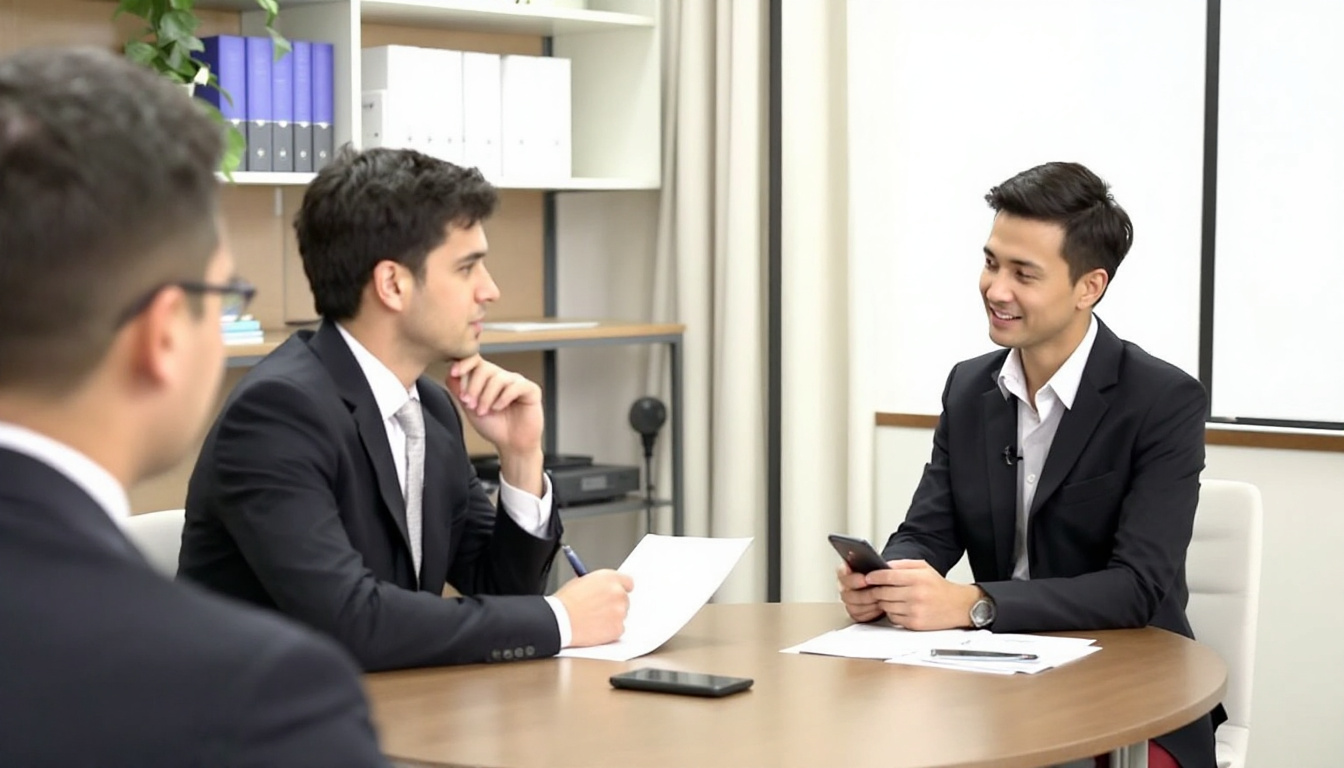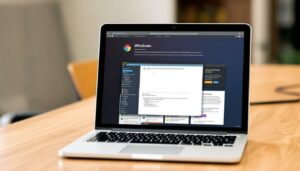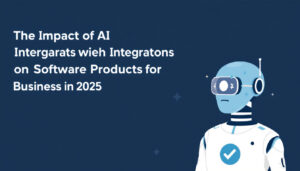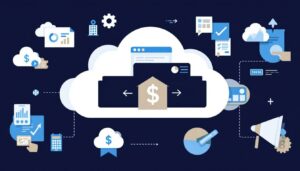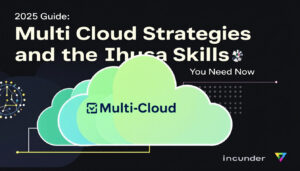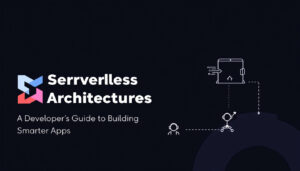An interview often marks a turning point in a career. Strong performance in interviews is not just about landing a job; it shapes how others view your professionalism and potential. Interviews provide a forum to showcase your knowledge, communication skills, and values, which are essential for ongoing professional development.
Preparation remains the most reliable route to success. Knowing how to answer common interview questions, organizing your thoughts, and reflecting after the conversation can all set you apart. Mastering these areas helps position you for advancement and new opportunities.
Those who invest in their interview skills consistently unlock better roles and build a positive reputation in their field. For candidates exploring positions in fields such as digital media, reviewing practical insights like those found in the guide on Digital Media Job Offer Evaluation can add valuable context to what employers may seek.
Understanding the Interview Landscape
The hiring process has become more structured and varied in recent years. Organizations use different types of interviews to assess candidates based on their role, required skills, and company culture. Understanding these formats not only enables better preparation but also reduces uncertainty. By knowing what to expect and what employers look for, applicants can adjust their approach to each setting.

Photo by Anna Shvets
Common Types of Interviews
Today’s interview process spans several formats, each with unique challenges and expectations:
- Phone Interviews: Often used for early screening, these are structured to assess communication skills and basic qualifications. The absence of visual cues means answers must be clear and concise.
- Virtual Interviews: Video-based meetings have become commonplace, allowing for remote assessment. Factors like camera setup, background, and reliable internet add new layers to preparation.
- In-person Interviews: Traditional face-to-face meetings remain a key step. Body language, punctuality, and appearance all contribute to first impressions and professional image.
- Panel Interviews: These involve multiple interviewers—sometimes from different departments—evaluating candidates together. Responses need to engage all participants and demonstrate adaptability.
Each format calls for careful attention to detail and adjustment of speaking style, environment, and technical setup.
Why Employers Use Different Interview Formats
Employers tailor their approach to interviews to gain a broader understanding of candidates. Each method serves clear purposes:
- Efficiency: Shortlisting through phone or video helps manage large applicant pools.
- Depth: Face-to-face and panel interviews allow for open-ended questions and the chance to observe interpersonal skills.
- Consistency: Structured interviews with multiple interviewers ensure fairness and reduce bias.
Different employers weigh these factors based on resources, job function, and the nature of the work environment.
What Employers Seek During Interviews
During all interview types, hiring managers evaluate a range of traits:
- Clear Communication: The ability to give structured, direct answers.
- Professional Presence: Demonstrating reliability through punctuality and decorum.
- Job Fit: Showing relevant experience, adaptability, and alignment with company values.
Employers want evidence of practical skills but also look for motivation and culture fit. They may ask behavioral or situational questions to see how a candidate thinks and reacts under pressure.
For those seeking more structured preparation, reviewing resources such as the Guide to listing digital products on Amazon KDP in 2025 can help understand how detailed planning leads to better outcomes, even beyond interviews. These insights highlight the value of tailoring responses to the expectations of each interview format.
Interview Preparation Essentials
Thorough preparation helps set strong candidates apart and increases their confidence. Taking the right steps before an interview positions you to respond clearly to questions, relate to your interviewers, and create a professional impression from the start. Focus on three core elements: researching the company, practicing interview responses, and planning logistics.
Researching the Company
Effective company research goes beyond scanning the homepage. Learning about an organization’s culture, history, and values means reviewing their official website, reading relevant press releases, and examining leadership bios. Study their “About Us” and “Careers” sections for insights into their goals and expectations.
Check the company’s social media for recent announcements or campaigns, and note how they respond to public feedback. Platforms such as LinkedIn and Twitter can reveal current projects or shifts in business focus. Also, scan industry news sources for updates on competitors or market trends—they often show what changes the company may face.
Key strategies for company research:
- Visit the employer’s website and explore all public-facing pages.
- Review recent news articles or press releases about the company.
- Analyze company social media profiles for recent posts and interactions.
- Search for employee reviews on platforms like Glassdoor to assess workplace culture.
- Identify industry trends with sources like Design Trends in Consumer Behavior to understand the broader landscape.
Solid company knowledge lets you align your answers and questions to their priorities and values.
Practicing Answers to Common Questions
Anticipating likely interview questions is a core part of preparation. Begin by carefully reading the job description, focusing on listed skills, experiences, and any repeated language. This provides clues about the qualities the employer values most.
Write down questions you expect based on the role. Standard questions cover your background, achievements, problem-solving methods, and interest in the company. Practice answering out loud—or with a partner—to refine your delivery. Aim for clear, concise responses that connect your experience with the job requirements.
Steps for practicing responses:
- Identify common interview questions relevant to the role.
- Relate your answers to the skills and experiences mentioned in the job description.
- Refine your responses to behavioral questions using the STAR method (Situation, Task, Action, Result).
- Record or rehearse your answers to check clarity and confidence.
Preparing in this way helps reduce nerves and promotes consistent, well-structured answers.
Logistics and Technical Setup
Attention to logistics reflects professionalism and respect for your interviewers. For in-person meetings, select an outfit that matches the company’s dress code—business formal for corporate workplaces, or business casual for less formal settings.
If the interview is virtual, test all technology in advance. Ensure your internet connection, webcam, and microphone function correctly. Prepare a quiet, well-lit space where you will not be interrupted.
 Photo by Tima Miroshnichenko
Photo by Tima Miroshnichenko
Checklist for logistics and setup:
- Choose a professional interview outfit and confirm the company’s dress expectations.
- Print extra copies of your resume or keep a digital file handy for virtual meetings.
- Prepare a notepad and pen, or a digital device for notes.
- Test your camera, microphone, and lighting for video interviews.
- Select a quiet space and notify others, if needed, to avoid interruptions.
Investing time in the details of preparation results in a smoother, more focused interview and shows that you respect the process. For guidance on evaluating potential work environments beyond the interview, read the Guide for Tech Experts on Job Offer Evaluation.
Answering Questions with Impact
Interviews allow employers to assess not only a candidate’s experience but also their ability to communicate clearly under pressure. Strong responses set candidates apart from others, especially when answers are structured and well-supported. Two main challenges arise during interviews: organizing responses that highlight skills and remaining calm when asked difficult or surprise questions.
The STAR Technique: Telling Your Story
The STAR technique is a proven way to organize answers to behavioral interview questions. STAR stands for Situation, Task, Action, and Result. This method helps candidates address what happened, what was required, the actions taken, and the outcome. The structure improves clarity and keeps answers concise.

Photo by Edmond Dantès
Here’s how to use STAR in practice:
- Situation: Briefly describe the context. Keep it relevant and succinct.
- Task: Explain the responsibility or challenge faced.
- Action: Detail the specific steps YOU took, not what the group did.
- Result: Share the outcome, highlighting any positive impact. Quantify results when possible.
Strong Example:
Situation: “In my previous role, the sales team was missing targets for two quarters.”
Task: “I was asked to find out why and develop a solution.”
Action: “I conducted a review of our sales processes and found that leads were not being prioritized by value. I proposed and rolled out a new lead scoring system.”
Result: “Within three months, our conversion rate rose by 20%, and the team met targets for the rest of the year.”
Weak Example:
“We weren’t selling enough, so we tried to work harder and things got a little better.”
Candidates often go off-topic, provide too much background, or fail to describe specific actions. To avoid these pitfalls:
- Focus on your direct contribution.
- Avoid lengthy context or unrelated details.
- Quantify results or describe what success looked like.
For further reading on how to use the STAR method in interviews, visit this comprehensive guide on the STAR interview method.
Navigating Difficult or Unexpected Questions
Unexpected or challenging questions are common in interviews. These questions may test problem-solving ability, honesty, or composure. Preparation makes a difference, but composure and honesty are key when faced with surprises.
To manage these situations:
- Pause before answering. Taking a breath or a few seconds to collect thoughts signals confidence.
- Acknowledge the challenge if you need more time: “That’s a thoughtful question; let me consider it.” This is preferred over rushing or appearing unsettled.
- Be honest if you lack a direct answer. For example, “I have not encountered that exact situation, but here’s how I would approach it based on past experience.”
- Stay focused. Reframe the question in your mind and refer to relevant skills or scenarios when possible.
- Avoid rambling. Stick to the question. If you find yourself going off topic, pause and bring the answer back.
Common mistakes:
- Trying to cover up gaps or make up stories.
- Showing frustration or nervous habits.
- Providing vague or generic responses.
Candidates often find techniques such as asking clarifying questions or taking short pauses useful in maintaining composure, as discussed in this resource on staying calm in interviews.
Investing in clear and structured responses and being prepared for challenging moments will support a professional and capable impression during any job interview. For more on preparing your answers and understanding the role-specific expectations, review the insights in the step-by-step guide to listing digital products on Amazon KDP.
What to Do After the Interview
The period following an interview matters as much as the meeting itself. Post-interview actions can confirm your professionalism and shape the impression you leave. Three main practices help reinforce your candidacy: sending a thank-you note, reflecting on your performance, and following up for feedback.

Photo by Kampus Production
Sending a Thank-You Note
A thank-you note—sent within 24 hours—shows respect and attention to detail. This note should be brief and customized. Acknowledge the interviewer’s time and mention a specific topic you discussed. Express continued interest in the role and company. Email remains the preferred choice for most situations.
Key points for a professional thank-you note:
- Use a clear subject line (e.g., “Thank You – [Your Name], [Position Title] Interview”).
- Start with a formal greeting and thank the interviewer directly.
- Refer to a unique part of your conversation or something specific about the job or company.
- State your interest in the position.
- Close professionally using your full name and contact information.
This step is not optional; employers expect it and often note who does and does not follow up.
Practicing Self-Reflection
After an interview, assess your own performance. Consider what you answered well and where you could improve. Write down questions that were difficult and your responses. This process helps you identify gaps to address in future interviews.
Practical tips for self-reflection:
- List all questions you remember and grade your confidence in each response.
- Note any topics you struggled to explain or technical issues that arose.
- Set aside time to review your notes and consider how to improve answers next time.
Over time, candidates who reflect on their performance develop clearer, more concise responses and grow more comfortable in new situations. For those interested in structured professional growth, learning about skills assessment can provide extra support.
Following Up for Feedback
It is appropriate to request feedback, especially if you are not selected. Reaching out in a respectful manner adds to your reputation. Employers may share insights that help you in future interviews.
How to follow up for feedback:
- Wait until the hiring process has concluded. Do not request feedback before a decision is made.
- Draft a brief, polite email to your main contact. Thank them for the opportunity and specifically ask if they can provide feedback on your interview performance.
- Accept all remarks graciously. Avoid defensive language. Use what you learn to prepare for your next interview.
Most applicants do not ask for feedback, but those who do are often remembered for their professionalism. This final step shows that you value growth and continuous improvement. For additional support with follow-up communication, refer to external guides such as tips on writing post-interview thank-you notes.
Each step—thank-you notes, self-reflection, and following up—demonstrates attention to detail and a sincere desire to excel. Collectively, they leave a strong professional impression that lasts beyond the interview itself.
Conclusion
Interview mastery supports lasting career growth, allowing professionals to present their skills and values with clarity and confidence. Each phase—from thorough preparation to precise follow-up—builds trust and strengthens your reputation. Using these strategies transforms interviews into meaningful progress, not just single events.
Consistent effort in interview preparation pays off. Over time, attention to detail and clear communication open doors to rewarding roles and continuous advancement. For those seeking to improve their professional image further, reviewing how to maximize your LinkedIn profile for career growth can offer additional guidance.
Treat every interview as an opportunity to build momentum in your career. With careful practice and reflection, each conversation becomes a step toward your long-term goals. Thank you for reading—consider sharing your own experiences or insights on interview preparation to help others succeed.

